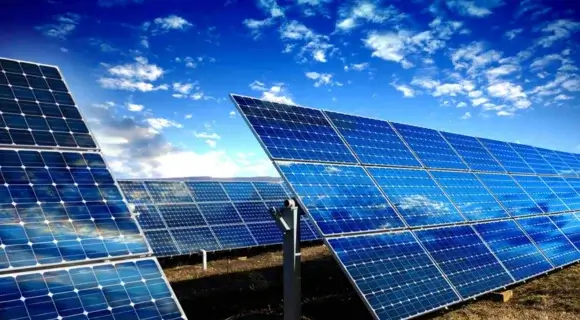The solar energy is a trending sector with more and more countries embracing the sustainable and renewable energy resources. The countries that will be of greatest influence in terms of producing this solar energy by 2024 are as follows. Top 10 largest solar energy producers in megawatts and innovative strategies and policies that made them become some of the front-running adopters of this clean energy revolution.
Countries With Highest Solar Energy Production
1. China – 393,032 Megawatts:
Chinese solar energy tops the globe at 393,032 megawatt. The ambitious renewable energy initiatives of the nation and solid infrastructural nature show its dedication. China has deliberately taken bold efforts inclusive of solar technology research and development to consolidate the solar energy supreme nature.
The huge renewable energy projects by China are sheer dedication that reflects its approach as a committed nation. The big strategy of solar energy by the nation has vast resources to support this energy plan. Fierce policies advocated technology and innovation at priority. Chinese innovative energy policies encouraged sustainability and environmental creation.
2. United States – 113,015 Megawatts:
At the second place comes United States with their 113,015 Megawatts of solar energy production. When it comes to the renewable energy production, this country offers the best results. With the new solar farms and plenty options for rooftop installations, United States is widening all the probabilities for Solar energy usages.
The U.S. pioneered solar energy sustainability. Federal, state, and local governments’ combined strategy is responsible for this achievement. Companies and individuals have invested in solar infrastructure due to U.S. tax advantages. These financial incentives make solar systems affordable and desirable, encouraging adoption.
California and Texas pioneered solar energy with innovative policies and incentives. California has ambitious renewable energy and solar energy goals. Texas dominates large-scale solar installations due to its sunlight and vastness.
3. Japan – 78,833 Megawatts:
The third promising solar-producing nation is Japan having capacity tapping at 78,833 megawatts. After bearing the Fukushima disaster that struck Japan, undoing the devotion to solar power is imperative in order to lessen reliance on traditional energy.
After the disaster at the Fukushima nuclear plant, Japan considered a switch to greener and safer energy sources. Such concern prompted Japan to quickly push and integrate solar energy into its electricity portfolio. This commitment is driven by the necessity of this nation to diversify energy sources, to promote sustainability as much as possible, and decrease the environmental impact of energy production.
Photovoltaic installations indicate Japan’s use of solar energy. Japan’s source of energy entirely relies on large-scale farms as well as rooftop systems. Decentralized solar system helps Japan in the construction of its flexible energy network.
4. Germany – 66,554 Megawatts:
Germany comes fourth in the list with 66,554 megawatts of solar capacity at the forefront of the worldwide renewable energy transition. Sustainability efforts in Germany focus world on America’s Energiewende where a major energy transformation program is under implementation. In the meantime solar power still remains key to the country’s renewable energy portfolio.
With the broader Energiewende plan, Germany initiated a decarbonization program of its energy sector by avoiding greater energy dependency on conventional energies. The emphasis sustained the promotion of solar, wind, and biomass at installation levels to maintain and strengthen the energy landscape.
Germany innovated solar energy effectively with its policies. It has feed-in tariffs that raise it. Power payments are guaranteed to solar energy companies thereby promoting solar infrastructure in Germany. Financial incentives like subsidies boosted the business and residential use of solar panels.
5. India – 63,146 Megawatts:
India has soon become the fifth big solar generator storing 63,146 megawatts. It is in this fitting context that India’s commitment to solar energy is manifest. Factors like ambitious government plans backed by a conducive renewable energy market environment, and subsidized projects have contributed to an increase in solar production. Adani Solar is the largest solar power producing company here.
Indian government’s solar goals show its leadership in energy transition. These set goals promote the national solar infrastructure needs. India intends to sustainably meet her increasing power needs and contribute to fighting climate change by setting their goals high.
6. Australia – 26,792 Megawatts:
Australia has 26,792 megawatts of solar energy, the sixth-biggest globally. Australian solar energy potential has expanded because of the rise of large-scale solar farms sited in the sun-drenched terrains of the Outback.
The areas within the Australian Outback are large and less populated, thereby ably hosting thousands of solar arrays without any obstruction. The spaces available in solar farms are spread out in such a way that sunshine reaches every array with much ease without obstruction by buildings or trees, thus allowing massive energy production. Due to its location on the globe, Australia is the leading country in solar energy.
7. Italy – 25,083 Megawatts:
Italy has 25,083MG decametres of solar energy it ranks the 6th place in the globe. Longevity pushing for renewable energy indicates the devotion of the nation and government policies made solar initiatives work while weather added on to the completion. Italy’s big infrastructural investments are huge mirrors of carbon reduction emphases at large.
The pro-renewable energy policy by the government shaped the solar energy path of Italy. The sector has received much boost through subsidies and feed-in tariffs on solar energy producers. Adoption of solar technology and input is, therefore, driven by viable policies that promote investment in sustainable energy.
8. Brazil – 24,079 Megawatts:
Brazil has the world’s sixth-largest capacity for solar energy at 24,079 megawatts. The country is diversifying its energy tiles with the solar power. The installation of solar is on a boom in Brazil owing to its amply available terrain and rising demand for renewable energy.
Favorable terrain in the country makes solar power thrive. Solar power works best in sunlight and wide expanses. The geographical advantage enables installations to be put strategically to get much of the sun and enhances the competitiveness of solar energy in its energy mix.
9. Netherlands – 22,590 Megawatts:
The Netherlands tops the eighth position globally with 22,590 megawatts of the solar energy. Despite its small size, it echoes the expansion in the utilization of solar energy for sustainability. The utilization of the solar power in the country indicates not only the government environmental concern but also advances in solar technology, which are being harnessed to form part of the country’s energy mix.
It is through innovative laws being set aside for the investments in solar technologies that make the nation to encourage adoption of solar energy. Netherlands’ pioneer attitude towards environmental sustainability makes it be a global provider of solar energy despite its size.
10. South Korea – 20,975 Megawatts:
South Korea has 20,975 of solar energy, placed eighth in the world. The country is committed to promoting renewable and reducing carbon energy proof with its expansion of solar infrastructure. South Korea’s solar energy accomplishment is resultant of technology and regulation.
Carbon reduction goals drive solar infrastructure growth in South Korea. In the environmental policies, the government has put aside preference in relation to renewable energy. Reduction in the pollution level from the country reduces the burden on South Korea in regard to achieving of its sustainable energy targets.
Conclusion:
These are the 10 largest producers of solar energy with their great contributions. In this case, it has been a broad spectrum of strategies, policies as well as technological innovations that have put the countries in the front line in revolutionizing solar energy. On the backdrop of the raising temperatures across the globe, accompanied by changing climates, these global leaders still stand strong as constant reminders that the sun may be misleading in its destructive activities but it can also be a powerful tool for a cleaner and greener world.

Brandon is the cheif editor and writer at WorldUnfolds.com. With a passion for storytelling and a keen editorial eye, he crafts engaging content that captivates and enlightens readers worldwide.














